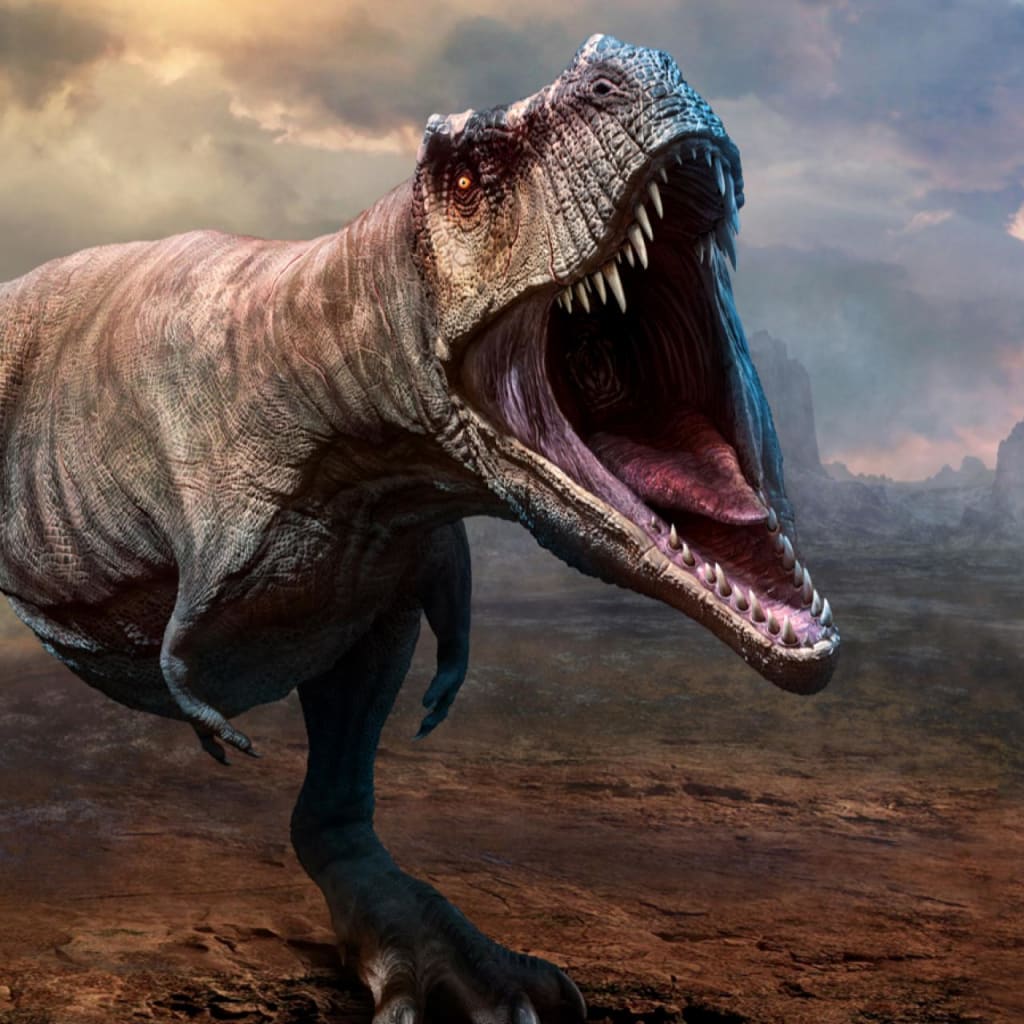
The extinction of the dinosaurs is one of the most important events in Earth's history. It occurred at the Cretaceous-Paleogene (K-PG) boundary about 66 million years ago, and several theories have been proposed to explain this catastrophe.
The most widely accepted theory is the impact theory, which suggests that a large asteroid or comet collided with Earth and caused a global catastrophe. The impact would have produced a "nuclear winter" effect as it would have released massive amounts of energy, created massive wildfires and tsunamis, thrown debris and dust into the atmosphere, blocked sunlight and caused a dramatic drop in temperature. This long period of darkness and cold temperatures disrupted ecosystems and led to the extinction of many plant and animal species, including the dinosaurs.
Evidence for this theory includes the discovery of a giant impact crater called Chicxulub off the coast of Mexico's Yucatan Peninsula. The impact would have caused widespread forest fires, as evidenced by the presence of layers of granite and charcoal in the K-PG boundary rocks. Additionally, high levels of iridium, a rare element found in asteroids and comets that are not abundant on Earth's surface, were found in sedimentary layers along the same boundary, further supporting the impact theory.
Another theory suggests that volcanic activity played a major role in the extinction of the dinosaurs. The Deccan Traps, a large volcanic province in present-day India, was erupting during the late Cretaceous period. The release of volcanic gases such as sulfur dioxide and carbon dioxide can lead to acid rain and global warming caused by greenhouse gases. These environmental changes would have stressed the ecosystem and led to the extinction of many species, including the dinosaurs.
A combination of impact theory and volcanic activity is also plausible. A large impact may cause increased volcanic activity by generating seismic activity and releasing additional gases into the atmosphere. This "double whammy" scenario would have led to a more severe and rapid ecological decline, which would explain the suddenness of the mass extinction event
It should be noted that the exact sequence of events that led to the extinction of the dinosaurs is still a matter of active research and debate. The main contenders are the impact theory and volcanic activity, while sea-level changes, climate changes, and disease have also been suggested as contributing factors.
Regardless of the exact cause, the extinction of the dinosaurs paved the way for the rise of mammals and eventually humans. The disappearance of dominant reptile species allowed mammals to diversify and occupy previously unavailable ecological niches. This eventually led to the evolution of primates and modern humans.
The extinction of the dinosaurs was a complex and multifaceted event that involved a combination of factors. The most widely accepted explanation is the impact theory, which suggests that a large asteroid collision played a major role. However, volcanic activity, climate changes, and other factors may also cause extinctions. Regardless of the specific causes, this mass extinction event had profound consequences for Earth's ecosystems and the course of evolutionary history.
The extinction of the dinosaurs, which occurred approximately 66 million years ago, is a fascinating chapter in Earth's history. As our understanding of this event has evolved over time, the asteroid impact theory is a widely accepted theory.
About 66 million years ago, a large asteroid about 6 miles in diameter struck the Yucatan Peninsula in present-day Mexico. The impact released a large amount of energy, leading to catastrophic environmental changes. Dust and debris ejected into the atmosphere blocked sunlight, causing a sudden drop in temperature - a phenomenon known as "impact winter".
Prolonged darkness disrupted the food chain, plants were unable to photosynthesize, and herbivores were deprived of sustenance. As a result, carnivorous dinosaurs also faced severe food shortages. This catastrophic event, combined with forest fires and acid rain, pushed many species to the brink of extinction.
While some smaller dinosaurs and avian ancestors survived, most non-avian dinosaurs died out because they could not adapt quickly enough to these drastic changes. This asteroid impact theory is evidence of the profound influence of extraterrestrial forces on Earth's ecosystems and highlights the delicate balance of life on our planet.





Comments
There are no comments for this story
Be the first to respond and start the conversation.